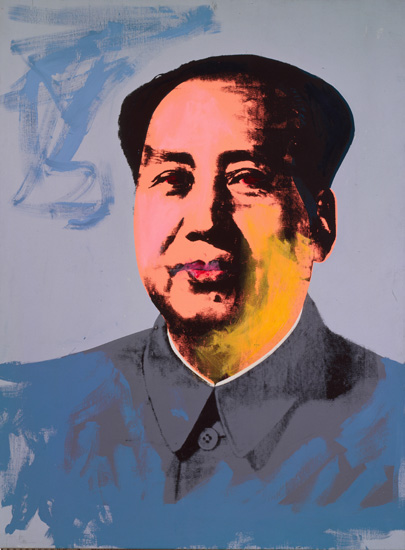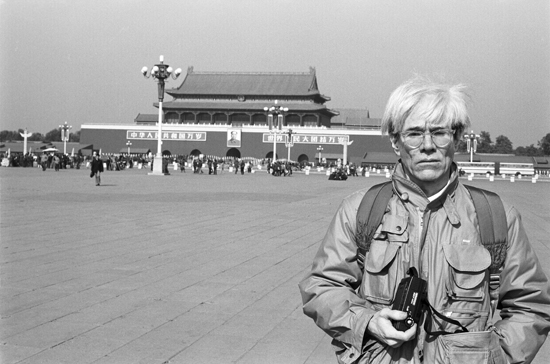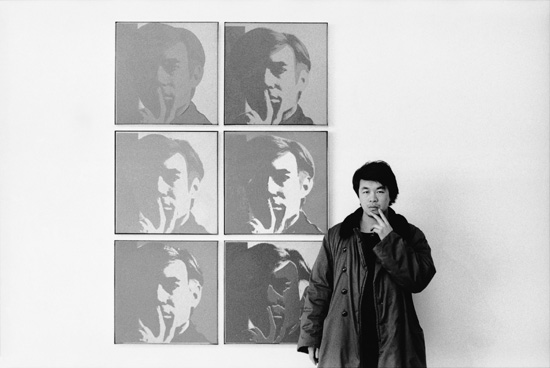In Beijing, in October, I saw the work for which he cut open the wall between two of the city's most prestigious galleries, Continua and Tang Contemporary. Ai Weiwei reassembled a Ming Dynasty ancestral hall in the gallery space. The ancient building was disassembled into more than 1500 pieces and meticulously re-built, crossing the wall that divides the two galleries. Walking into the gallery space one felt very small beneath the ancient wooden beams and columns. He wanted to create an installation with 'imposing structure, cultural importance and aesthetic beauty... aimed at setting conditions of “totality” where the environment, which is no longer physical but also temporal and social, becomes an essential aspect of the work.' The audience becomes a part of the artwork, but can only ever see a partial view of the whole structure. Like the early 20th century readymades of Marcel Duchamp, a pre-existing object (in this case, an entire building) was deprived of its original use, acquiring a new shape and, potentially, new meanings that are dependent upon those entering the space. It raised questions about Chinese history, social behaviour, the preservation of antiquity (always a hot button issue in China) and of art as physical experience.
The NGV show, sadly, raises no such interesting questions, and some of the quieter and more subtle works are lost amidst the most hectically over-designed exhibition spaces I have ever seen.
Here is my review of the show, published on The Art Life site this week:
Mass produced, ubiquitous: Warhol + Weiwei
Two ghosts loom over the bicycle frames, Lego bricks, Han Dynasty urns and screen-prints in Melbourne’s NGV. One is the spirit of Marcel Duchamp, who casts his long shadow over what we see there; the other is a spectral Mao Zedong. It must have seemed an inspired idea, to juxtapose the two giant figures of Andy Warhol and Ai Weiwei: they each took the Duchampian ready-made and ran with it, making it (and themselves) into a new kind of global brand. Taking unexpected and irreverent positions on the world in which they found themselves, they each reinvented the identity of the artist in significant and substantial ways. Both were shaped by their arrival in New York, too, the gay boy from Pittsburgh, and the son of the famous Chinese poet. There are so many rich possibilities in bringing together two colossal figures, so significant to the 20th century and the start of the 21st. It’s a comprehensive overview of their work, featuring 200 works by Warhol and 120 by Ai. And yet…the exhibition disappoints in a number of ways.
Andy Warhol, Mao, 1972, The Andy Warhol Museum, Pittsburgh; Founding Collection, Contribution Dia Center for the Arts. © 2015 The Andy Warhol Foundation for the Visual Arts, Inc./ARS, New York. Licensed by Viscopy, Sydney
In part it is because Warhol and Ai Weiwei are just too damn ubiquitous. Obsessively recording every aspect of their daily lives (Warhol in film and Polaroids, Ai Weiwei on video, Twitter and Instagram), they democratised, appropriated, outsourced and demystified the practice of art like no-one else since Marcel himself. The result is, ironically, that in many cases the actual works have lost much of their power, reproduced just too often. The myth is bigger than the artworks: Nico and the Velvet Underground; a naked Joe Dallesandro and a fey Edie Sedgwick; Lou Reed at the Factory; cigarette smoke and crushed velvet, the apotheosis of cool. Ai Weiwei, undoubtedly brave and resolute, continues his crusade against the repressions of the Chinese regime: 181,000 followers on social media joined his ‘#flowersforfreedom’ campaign for the return of his confiscated passport. He has become a global superstar of dissidence. And yet… as I wandered through the NGV exhibition, I pondered why it fails to provide quite the anticipated big bang.
There are memorable moments. The installation of steel bicycle frames that soars in the foyer, glinting in the sun, makes us remember that Ai Weiwei’s earlier works were often poetic and multi-layered. The frames of the famous ‘Forever’ bicycle brand of his Cultural Revolution childhood are stacked in a spectacular tower. These bicycles are going nowhere, in a sardonic jab at both revolutionary socialism and the overwhelming scale of Chinese manufacturing. At the same time, they memorialise a 1960s Chinese childhood that is gone forever, much as his famous ‘Sunflower Seeds’ referenced a humble snack shared in very lean times. The dismembered feet of ancient Buddha statues, almost lost in the corner of a hectic and self-consciously over-designed space, remind us that much of Ai Weiwei’s work has focused on the destruction wrought upon China in the name of revolutionary ideology, ‘progress’ and modernisation. An installation of traditional wooden stools (a smaller version of the 886 shown at the Venice Biennale in 2013) continues his use of ancient artefacts as found objects. Like many other contemporary Chinese artists in the 1990s and early 2000s, Ai began to incorporate previously forbidden elements of traditional culture into his work, addressing the big questions of what we value, and why. The simple three-legged stool, once owned by every family and used for a multitude of purposes, has been superseded by mass-produced plastic.
Christopher Makos, Andy Warhol in Tiananmen Square, 1982. © Christopher Makos 1982, makostudio.com
Surprises and moments of wit are woven amongst the familiar images, although some might argue that the famous ‘Dropping a Han Dynasty Urn’ photographs re-made in Lego are entirely too self-referential, and the portraits of human rights activists made with knock-off Lego are, sadly, as insubstantial as one of Ai’s tweets. Two walls are papered with images of the flower-filled bicycle basket outside Ai’s Beijing studio. He placed a bunch of flowers for every day that the Chinese government refused to return his passport after his release from 81 days of detention in 2011. The bicycle itself is propped against the wall in a mute symbol of resistance – and resilience.
A field of white porcelain flowers evokes the past suppression of individual desires and aspirations into the collectivist masses. Unfortunately, the exhibition text for this work refers only to the artist’s ‘Flowers for Freedom’ campaign, reducing it to a slogan. ‘Blossom’ is far more nuanced and multi-layered, referencing Chinese history, and Ai Weiwei’s own story. In the ‘Hundred Flowers’ campaign of 1956, Mao invited criticism of his policies with the dictum, ‘Let a hundred flowers bloom and a hundred schools of thought contend.’ A year later, those who had accepted the invitation to express their views found themselves targeted in a purge. Up to 550,000 intellectuals, artists and writers were publicly discredited, some sent into exile and forced labour. Ai Weiwei’s father, Ai Qing, was one of these. The fragility of porcelain, that most Chinese of materials, testifies to the courage of those who spoke out.
Ai Weiwei, At the Museum of Modern Art, 1987 (detail), from the New York Photographs series,1983–93, collection of Ai Weiwei. © Ai Weiwei
Click HERE to read more.



